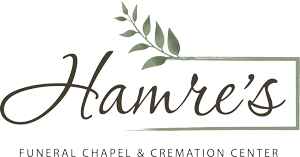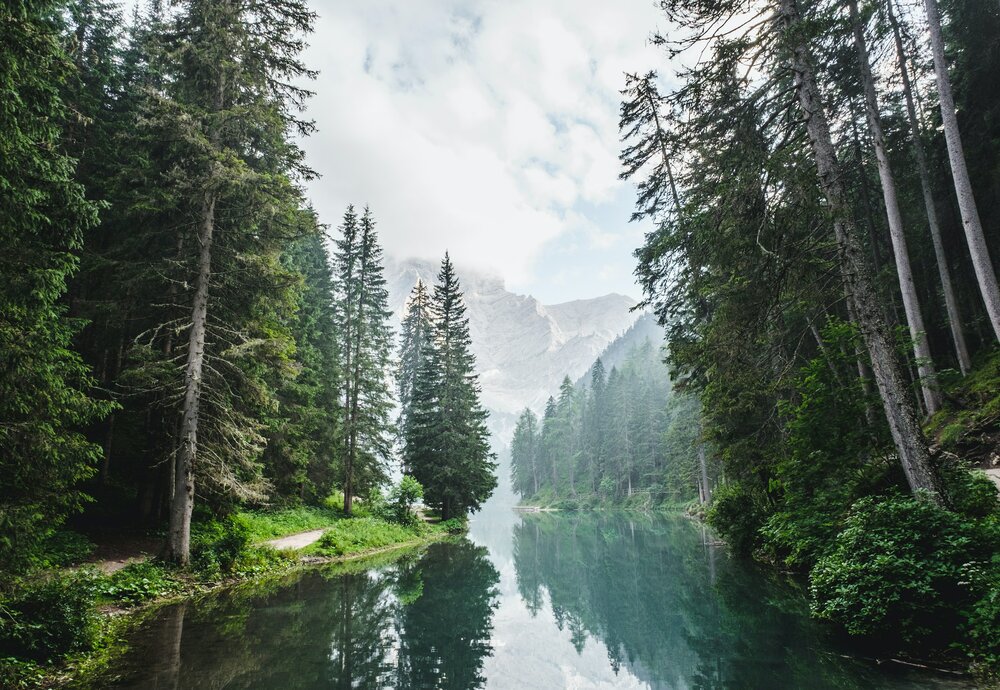Burial Services
Traditionally, a burial service involves a visitation and a funeral service. While the casket is typically present at both these events, it is your decision whether to have the casket open. You then have a number of options for interment. Decisions also need to be made on whether the body needs to be embalmed, what kind of casket to use, what cemetery to use and what to put on the monument.
Cemetery Types
Monumental cemetery
A monumental cemetery is the traditional style of cemetery where headstones or other monuments made of marble or granite are placed upright above the ground. There are countless different types and designs for headstones, ranging from very simple, to large and intricate. In Fort St. John and surrounding areas, these are the most common cemeteries.
Lawn cemetery
A lawn cemetery is where each grave is marked with a small commemorative plaque which lays flat at the head of the grave at ground-level. Families can still be involved in the design and in choosing the information contained on the plaque, but in most cases the plaques are a standard design.
Mausoleum
A mausoleum is an external, free-standing building constructed as a monument that encloses the interment space or burial chamber of a deceased person or people. A mausoleum may be considered a type of tomb, or the tomb may be considered to be within the mausoleum. In Fort St. John, there are unfortunately no mausoleums.
Columbarium
Columbarium walls are generally reserved for cremated remains. A columbarium houses small spaces that hold urns called niches. Some niches are big enough to hold two urns or a double urn. While cremated remains can be kept at home by families, or scattered somewhere significant to the deceased, a columbarium niche provides friends and family a place to come and visit. Many people will place a name plaque on the front to mark the niche of their loved one. Columbarium walls do not take up a lot of space and are a cheaper alternative to a burial plot. Some cemeteries in and around Fort St. John have columbarium niches available for purchase.
Natural cemetery
Natural cemeteries, also known as eco-cemeteries or green cemeteries, are a new style of cemetery set aside for natural burials. Natural burials are motivated by the desire to be environmentally conscious. While natural burials can be performed at any type of cemetery, they are usually done in a natural woodland area, giving the feel of a more rustic place of rest. Conventional markings, such as headstones, are generally replaced with a tree, bush, or the placement of a natural stone. The Woodlawn Cemetery in Fort St. John has recently added the option for natural burials.
Burial FAQ
What costs may be associated with interment/burial?
Purchase of plot or columbarium
Also known as right of interment. This is the purchase of the space that will hold the casket or urn. It includes administration and record keeping, documentation with permission to inter, registration of the interment, maintaining legal files, etc. This may also include the reservation of funds to maintain care of the cemetery.
Open and Close
The open and close costs are costs that are associated with the opening and closing of the plot or columbarium. It may include the use of the device that lowers the casket and the greenery. Each cemetery will have it’s own policies and procedures in place.
Monument installation
Monument placement or plaque placement will have a cost for installation. Sometimes that may be part of the purchase of the plot or columbarium.
Purchase of a vault or rough box
Some cemeteries will require that the casket be placed in a vault or rough box which is designed to protect the casket. It also prevents the ground from settling. City cemeteries in Fort St. John do not require vaults or rough boxes at this time, however some rural cemeteries do.
Can we dig our own grave to avoid the charge for opening and closing?
City of Fort St. John cemeteries will have city personnel open the plot. Some families will fill in the plot by hand based on religious preferences. However, rural cemeteries will be more open to having families open and close on their own if that is something they want to do.
Why is having a place to visit so important?
To remember, and to be remembered. A permanent memorial in a cemetery provides a focal point for remembrance and memorialization of the deceased. Memorialization of the deceased is a key component in almost every culture. Psychologists say that remembrance practices serve an important emotional function by helping bring closure, which allows the healing process to begin. The provision of a permanent resting place is an important part of this process. It provides friends and family a place to go and have that final connection to their loved one.
In a hundred years, will this cemetery still be there?
We think of cemetery lands as being in perpetuity. The perpetual care fund is set up to care for and to maintain cemeteries indefinitely. Some cemeteries are maintained by local government while others are maintained by community volunteers. There are cemeteries throughout the world that have been in existence for hundreds of years.
How soon after a death must an individual be buried?
There is no law in BC that states a specific timespan for burial. Considerations that will affect the timeline include: the need to secure all permits and authorizations; notification and gathering of family and friends; preparation of cemetery site, location of burial, and religious considerations. The embalming process will help in the preservation if an extended amount of time is necessary before a burial. When you sit with a funeral director, they will help you through the timeline based on your needs.
Does a body have to be embalmed before it is buried?
No. Embalming is generally a choice, one which depends on factors such as if there is to be an open casket viewing of the body, or if there will be an extended time between death and internment. Public health laws may require embalming if the body is going to be transported by air.
What options are available besides ground burial?
Besides ground burial, there are not any other options in Fort St. John for a full body burial.
What are burial vaults and grave liners?
These are containers placed in the plot prior to the casket. Burial vaults or liners are designed to protect the casket and may be made of a variety of materials, including concrete, stainless steel, galvanized steel, copper, bronze, plastic, or fiberglass. A grave liner is a lightweight version of a vault which keeps the grave surface from sinking in. Some cemeteries will require this. Our city cemeteries do not require this, however if this is something a family wishes to have, they should talk with the funeral director about what that looks like for them.
There are alternatives to burial. See Cremation Services


